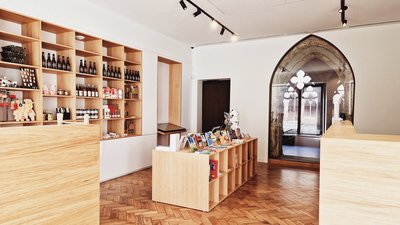
The Saverne Chateaux loop
Description
From the car park, go to the lock 16bis while crossing the road of Paris.
From the lock 16bis, take the cycle path along the Marne-Rhine Canal following the blue rectangle, then walk to the footbridge. Cross and take a left and go down the stairs to the RD132.
Continue on the GR®531 to get to Greifenstein Castle following the blue rectangle to the Saint Vitus Cave. Arrived at the Black Horse Rock (Rappenfels), turn right and go down to Stambach. Join lock 27 and cross the canal at the railway line. After 500m continue on the GR®531 and join the stone house on the left. Pass the tank on the right, cross the Keltenthal footbridge and continue to the Wuestenberg plateau.
To reach the Ochsentein Castles, take the Krappenfels Pass. Cross the locality Haberacker. On the left, take the GR®53 red rectangle and walk to Schaeferplatz. Continue on the forest road that climbs to the cave and the Brotsch Rock, then the Brotsch Tower.
Descend to the Witches' Table following the red rectangle, then cross the forest road signposted red bridge to reach the Castles of Petit and Grand Géroldseck.
Continue on the GR®53 red rectangle to join the Chappe Tower and the Château du Haut-Barr. In front of the castle starts the forest trail green ring that joins the Garenne.
Join the city center following the red rectangle. At the canal, take the bike path to the city center to lock 16bis.
- Departure : Écluse 16 bis de Saverne, Saverne
- Arrival : Écluse 16 bis de Saverne, Saverne
- Towns crossed : Saverne, Haegen, and Reinhardsmunster
8 points of interest
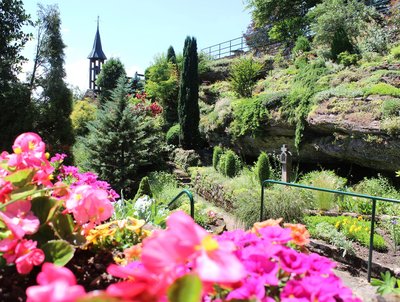
Jardin alpestre de la Grotte Saint Vit - Office de Tourisme du Pays de Saverne  Geology
GeologySaint-Vit Cave

Château fort de Greifenstein - SYCOPARC  Castle-church-abbey
Castle-church-abbeyGreifenstein fortified Chateau
This castle actually gathers 2 castles built on the same spur: the Old Greifenstein, which has the largest Romanesque keep of Alsace of which one can still see the door as well as the most recent square tower, and the Small Greifenstein of which one can only see the square keep in stones with bosses. Restored at the end of the Middle Ages to resist to artillery, then in project of fortification by Turenne around 1670, it will be finally dismantled in 1675. More information here.
 Castle-church-abbey
Castle-church-abbeyOchsenstein fortified Chateau
Fief of the Ochsenstein house, a powerful medieval Alsatian family, it is perched on three sandstone spurs, corresponding in reality to three castles: the great Ochsenstein, the largest and the only accessible, the small Ochsenstein and the castle of Wachelheim. Its construction would be prior to the 12th century. It was destroyed after its restoration in 1559 and then dismantled by the Swedish troops in 1632. One can still see the remains of a chapel.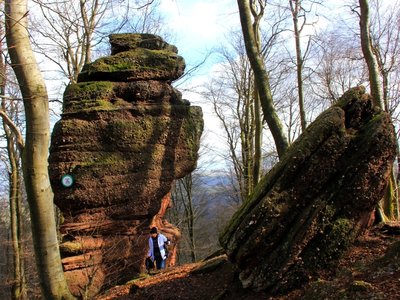
Rocher du Hibou - G.Schnell - http://www.randoalsacevosges.com  Geology
GeologyRocher du Hibou

Château fort de Petit Géroldseck - A.Dorschner  Castle-church-abbey
Castle-church-abbeyPetit Géroldseck fortified Chateau
Built on a rocky platform with access by a staircase to the east, it appears for the first time in 1349 under the name "Neu Geroldseck". Closely linked to the Great Geroldseck, it was certainly destroyed during the siege that led to the destruction of the latter, which had become a den of brigands. Difficult to observe because of the vegetation, the keep, of irregular quadrangular plan, is made of stones with bosses. The castle offers a beautiful view on the hills and the plain of Alsace.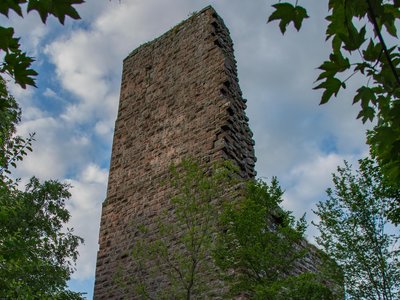
Château fort du Grand Géroldseck - A.Dorschner  Castle-church-abbey
Castle-church-abbeyGrand Géroldseck fortified Chateau
Built in the 12th century by the lords of Géroldseck to protect their territories on a rock whose irregular shapes it follows, it combined housing and defense functions. Later it became a den of robbers and was besieged and destroyed in 1471. One can still see the square keep made of rusticated stones, the cellars of the large seigniorial dwelling and the barbican.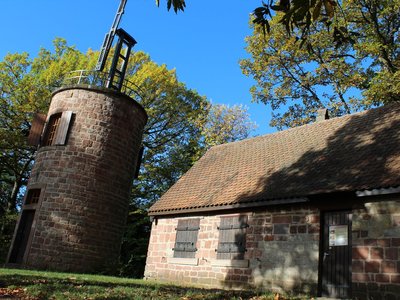
Tour de l'ancien Télégraphe Chappe - Office de Tourisme du Pays de Saverne  Small patrimony
Small patrimonyChappe Telegraph Tower
Located near the castle of Haut-Barr, this tower was once part of the telegraph line connecting Paris to Strasbourg from May 31, 1798, until 1852. It was rebuilt in 1968. Today is a museum.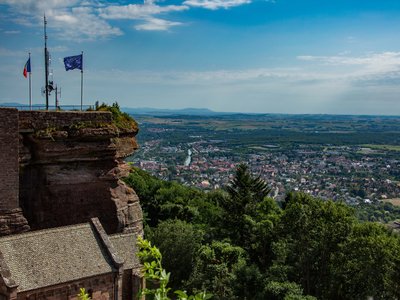
Château-fort du Haut Barr - A.Dorschner  Castle-church-abbey
Castle-church-abbeyHaut Barr fortified Chateau
The castle existed from the beginning of the 12th century and was enlarged over the years before being dismantled in 1649. The chapel, built between 1170 and 1180, escapes the dismantling and is restored. Between 1701 and 1801, new elements appeared, like a telegraph station, barracks, a house. The last two elements were destroyed in 1845 and 1918. In 1901, a hotel restaurant was built.
Forecast
Altimetric profile
Information desks
Tourist Office of the Pays de Saverne
37 Grand'rue, 67700 Saverne
Access and parking
Report a problem or an error
If you have found an error on this page or if you have noticed any problems during your hike, please report them to us here:

